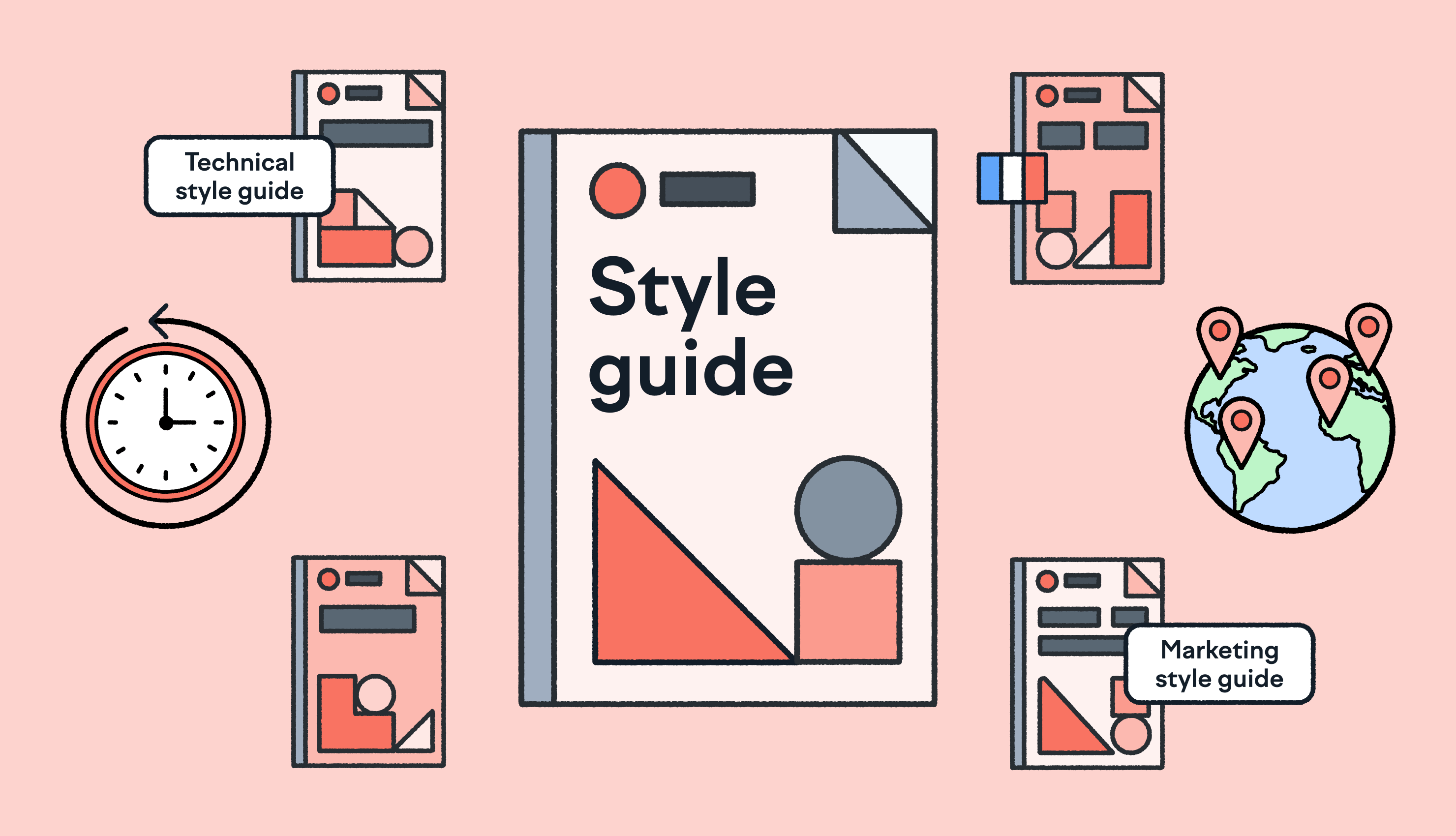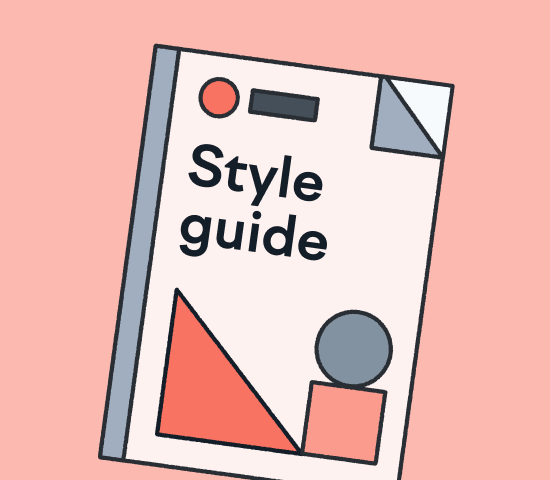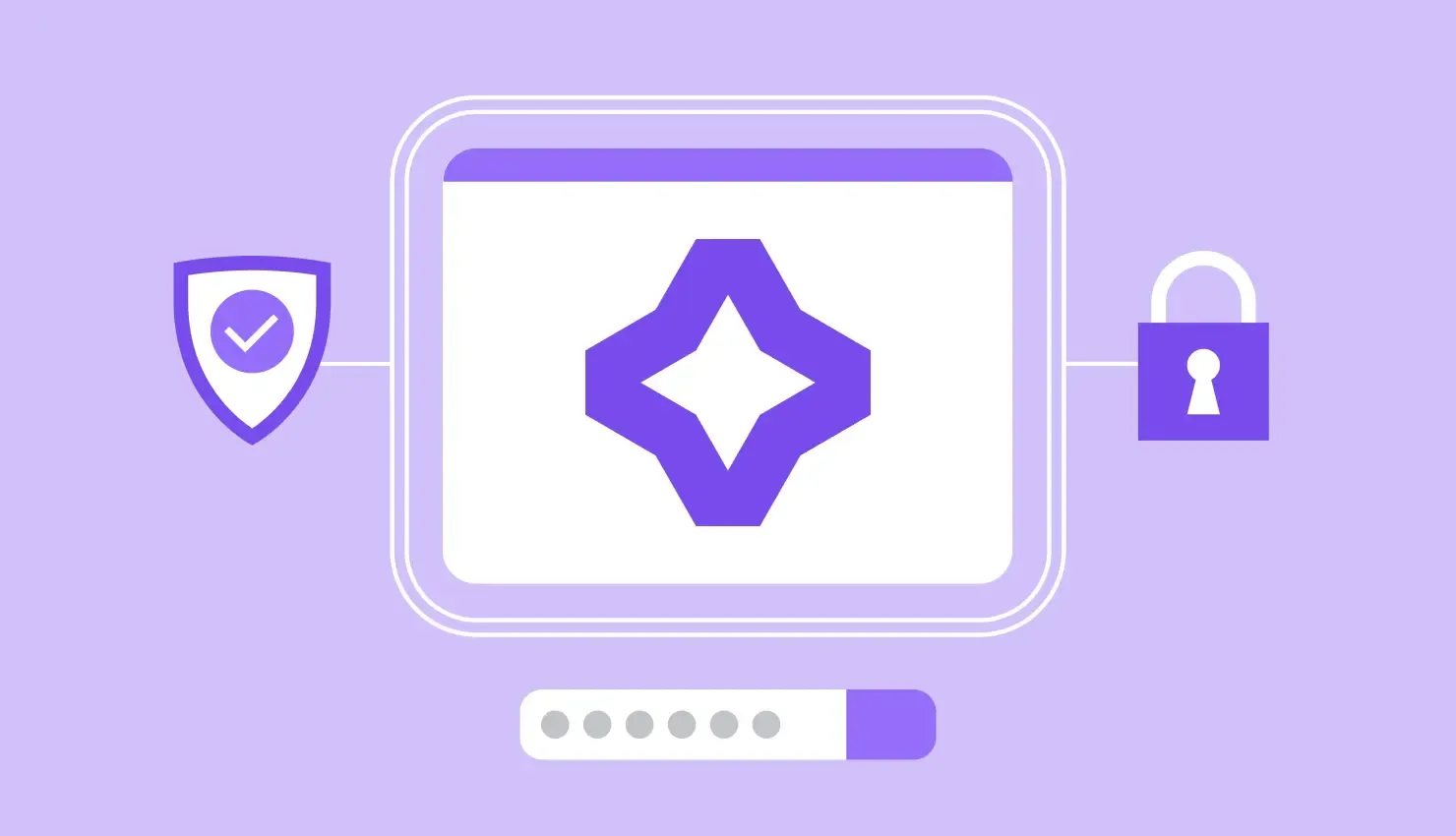
A new era of localization begins with Lokalise AI
Lokalise AI is a fully automated localization assistant that will change the way you think about translation.

When companies expand into new territories, style guides are one of the many tools that can make sure translated content is consistent, on-brand, and sensitive to local cultures and norms. It's used to define the tone, the formality, the grammar, and other stylistic preferences when targeting different audiences. Understanding what is AI translation can also play a key role in ensuring that the translation stays true to these preferences while leveraging the power of technology.
In this article, you’ll learn how to put together a style guide for human translators and how to transform it into a style guide that AI translation tools understand, so you get the high-quality content you need. After all, you don’t want that cleverly crafted copy in the original language to go to waste now, do you?
Get your translation style guide template
Don't start from scratch. Grab your free style guide template, featuring guidelines and examples.

You want your brand, product, and content to look and sound just right, no matter where you show up in the world. That’s where style guides can bring you peace of mind, and make sure everyone working on your content is aligned.
Think of a style guide as your personal rulebook for creating content that’s pitch- and picture-perfect.
With a style guide, you make sure that anyone who touches your brand, copy, or design will be able to replicate the way your brand or product should sound, as well as how content should be formatted, translated, and designed. This includes ensuring that contextual translation is applied, so the meaning and tone are preserved across languages.
Companies can have different style guides for different content types. Even for different languages and regions. As many brands past and present have found out (often the hard way), what works in one country won’t necessarily work in another.
Traditional style guides list rules for writing in a specific language. Whereas translation style guides offer direction on translating content from one language to another.
There’s a lot you’ll need to cover in your translation style guide, and you’ll need to update and improve your style guides over time. So we recommend starting with the most important information first and drilling down to the finer details later on. A well-organized content translation guide can help you structure this process effectively.
First, though, you’ll need to choose which translators to work with before writing your style guide.
Ok, so you need to launch your product or marketing campaign in five languages and will need translators to help adapt your content for different markets.
You might use in-house translators, a translation agency, a freelance translator, or the best AI translation tools, depending on your budget, time, and complexity/risk or visibility level of translations.
Here’s a quick overview of which translation type to choose and when:
No matter how you choose to translate content, you’ll always need a style guide to help move projects along faster and get the best results possible.
It’s important to note that the way you write your style guide for humans will differ from how you write your style guide for AI tools, like Lokalise’s AI orchestration system. Not to worry though, below we’ve outlined best practices for both.
Get your translation style guide template
Don't start from scratch. Grab your free style guide template, featuring guidelines and examples.

There are four things you’ll need to think about when creating a style guide for different audiences if you want it to be truly valuable for your translators:
To create a style guide, you’ll need to decide which sections to include. This will be your skeleton for all languages.
💪 Or just download this free style guide template
We put together this style guide template so you don’t have to, structured in a way that’s useful for human translators.
🧠 Good to know
Your style guide should be adaptable to all the different languages that you have and then also the content type.
The topics typically covered in a translation style guide include tone, voice, grammar, punctuation, formatting, any preferences, and also examples (see examples in the template):
Then next tool in your style guide survival kit is adaption! Tailor the style guide to your team's needs and the types oc content produced because one size doesn't fit all.
Here are three different scenarios:
Reach out to gather input and encourage ongoing feedback from key stakeholders. For example, for product development, you might involve the product manager and also the designer to guide you on terminology. You might want to connect with the creative team because they have a vision of how the brand should sound. Keep it in mind that the style guide is not going to be just a static document. It’s going to evolve as your brand evolves. So treat it as a living thing by:
Finally, an obvious but often forgotten one, make your style guide accessible because it is only effective if the people using it have access to it. So put it in a shared, space. It can be in a TMS, in company docs, or in Google Drive. And then raise awareness so they know where it is.
A well-devised style guide provides a number of benefits for translators.
Not only does it save time for both the company and the translator, because there's less back and forth, but it also improves the quality of the translations.
Most of the time, translators will help shape the contents of the guide. As different questions arise, the editorial team must answer them and add the rules to the style guide. This helps translators make the right decisions, minimizing the number of mistakes or inconsistencies.
The ultimate goal of a style guide is to create a user experience that connects with your consumer on a personal level.
There are a lot of tips and best practices out there, and it can be hard to remember them all. So, start with the three most important and iterate from there. As we mentioned before, your style guide will improve and grow over time, and ‘a’ style guide is better than ‘no’ style guide.
There is no one-size-fits-all style guide. Style guides are most effective when tailored for unique customer touchpoints and verticals. Take technical support documents and marketing content from the same company, for example. Each content type has a different purpose, audience, and unique writing style. That’s why it’s best to create unique style guides for different use cases.
Guidelines are suggestions that provide advice and direction rather than strict regulations that must be followed to the letter. This approach allows for some flexibility and creativity while still maintaining consistency. They uphold the standard and quality of the content but allow room for tweaks based on unique scenarios or evolving language trends.
You can always get into the nitty gritty of rules and language exceptions in a separate document if needed. Remember, if you include too much information in your style guide, translators won't remember half of it or won’t even read it. They’re probably working on several projects for different companies at the same time, all with their own style guides.
It’s tempting to spend ages perfecting your style guide, trying to guide every stylistic element of your brand’s voice, but there’s always going to be something you’ve missed. Our advice. Focus on the most important ones for your content.
Choose clear categories that cover the most common language and grammar pet peeves, and provide tangible examples of what to do and what not to do for each category. Common categories include company and product details like mission, values, and goals, tone and voice, audience, grammar and punctuation, word usage, and formatting.
Tatiana Ryabinina, localization manager at Co-Founder and Managing Director at Grow-thru, said:
“What helps in my experience are guidelines that are actually created to put translators in a position to make copy decisions. Most style guides I have seen have do's and don'ts, but no explanation of the reasoning behind them. If you don't want religious references in your translations, the best way to avoid them is to explain why you wouldn't want them in your brand messages, and learn from your translator’s mistakes.”

AI tools have only recently adopted style guides. That’s what makes them more powerful than their AI predecessors. Prompts are like rules within a style guide. The difference is that a style guide can be reused over and over again without you having to rewrite the rules.
You just upload your style guide once and AI tools will deliver outputs that reflect your brand style. Style guide rules are also likely to be more concise and to the point after some testing and fine-tuning.
Joaquín Muñoz, Localization Manager at Life360, can’t stress enough the importance of a style guide, whether using AI or human translators (or both), so that everyone's on the same page:
“Having a structured glossary and style guide makes a huge difference because the AI is only as good as you train it, so I worked for quite some time on our glossary and also our style guide to make sure that it was thorough and understandable. It helps translators stay consistent with your terminology, and it’s a living document you continue to update as a company progresses and adds more features.”
The goal of a style guide is the same for AI as it is for human translators: to create a consistent user experience for all users in any language. Both types should be written clearly and concisely. However, the content and structure couldn’t be more different.
💡 AI style guides inside Lokalise
When you upload your style guide to Lokalise, it’s summarized by AI in line with best practices, helping you improve the output of your translations.
Style guides are available to use during your free trial — sign up here.
💡 Important to note
If you have (good) translation memory inside Lokalise, using it as a context source for custom AI models is more impactful than using a style guide as context. That said, a style guide is valuable to solve the cold start problem when you don't have any past high quality translations.
Here’s how to make sure your style guide is AI-ready:
While human translators can infer context and pick up on subtle nuances, AI translators are not quite there yet. So a translation style guide for AI needs to be much more explicit and comprehensive. It should include clear instructions on how to handle ambiguity, slang, idioms, and other complex language constructs.
This approach was confirmed during the testing of our own AI.
We discovered that very detailed rules are more effective than guidelines. Each rule should relate to only one topic or scenario, and include an example. In comparison to a guideline-based style guide for humans, AI needs clearly defined instructions for how to handle tone, abbreviations, date formatting, translation lengths, etc.
Here’s an example of a specific rule you would add to your AI style guide about formality:
Use the informal Tu when translating verbs, pronouns, and possessive pronouns.
Example:
§ English: You can access your account settings from the settings widget.
§ Spanish: Puedes acceder a tu configuración de cuenta desde el widget de configuración
We’ll give you more examples of rules you might add for other categories below.
While it’s important to add categories to your style guide for human translators, it’s even more important for AI translation tools.
You should use clear and structured headings for different categories so the AI knows where to find relevant and important information related to the content it’s translating. Headings like Abbreviations & acronyms, Numbers & currency, Target audience, Tone of voice, etc, can help make rules clearer for AI tools. Another benefit of organizing your information is you’re less likely to add contradicting rules (more on contradicting rules later).
Double-check your hypothesis or rule before you make it part of your style guide.
Let’s use formal and informal pronouns as an example. Imagine you haven’t added formality rules to your style guide yet, so AI is switching between formal and informal styles for different content. Before adding a new rule to your style guide, use AI translators to test potential rules.
Only after you get consistent positive results, you can add the rule to your style guide.
Note: keep the style guide dynamic and open to updates based on new data, changes in language use, or feedback from outputs.
You’ll need to create specific style guides for different verticals, content types, projects, and languages. Otherwise, you run the risk of confusing the AI.
For example, you might mention that your target audience is young students and you want the tone to be fun. When referring to technical documents, you might add that the level of formality should be high in this type of content.
These contradicting statements could be confusing for the AI and lead to voice inconsistencies across different types of content. In some markets, you’d always write informal over formal, regardless of the company’s brand attributes. While translators might know to switch from informal to formal and vice versa depending on the target market, AI will need to be told which tone to use and when.
To avoid rules that contradict, you should create style guides that are:
Be clear and concise. Don’t include complex or confusing language. AI tools process large amounts of information more effectively when it's succinct. Start with a summary of the most critical guidelines, such as major dos and don'ts, preferred tone, and any standout rules.
Use straightforward and clear language, ensuring the AI can easily interpret and follow the guidelines. And avoid adding information that doesn’t impact the outcome of translations. This is not the place to get creative with your language. Bullet points instead of full sentences can help keep rules simple.
If applicable, use visual examples like formatted text to clarify more complex instructions, especially for layout or structured content translations.
Some style guides for human use include information about image transcreation, fonts, audio-visual translation, and other details relevant to unique translation workflows.
✅ DO | ❌ DON'T |
| Do define tone of voice, e.g. “friendly but authoritative” | Don’t write long or contradictory adjective lists (e.g. “bold, empathetic, humble, powerful”) |
| Do specify formality level, e.g. “use informal second person (you)” | Don’t say “adjust depending on context”, be precise |
| Do clarify audience, e.g. “Gen Z developers, non-native English speakers” | Don’t write vague directives like “Use inclusive language” without examples |
| Do include examples: “Do: Use ‘You can manage…’ / Don’t: ‘One may manage…" | Don’t use truisms/tautologies: “Do use short, medium, and long sentences” |
| Do be concise and specific (less is more) Aim to keep style guides under 2,000 words | Don’t copy/paste entire style guides over 2,000 words. They’ll hurt AI performance |
| Do separate non-translatable terms into a glossary, not the style guide | Don’t add a glossary directly into your style guide. Separate glossary-type content: do not translate (DNT) list, product names, currencies, or trademark rules |
| Do specify if currencies or units should be localized | Don’t specify known grammar rules (punctuation, capitalization), like “use DD/MM/YYYY in German”, LLMs already know this |
🤖 Want your AI style guide done for you?
You need a style guide for both human and AI translators.
Start with the style guide for humans and then condense it for AI.
Why not sign up to Lokalise to summarize your style guide?
Then use our AI, infused with your style guide and other context, to translate thousands of content snippets all in one go in minutes, just like one of our customers:
“I can just tell the style guide to ignore the pronouns in sentences. And I can do that across 100,000 strings.”
– Ella Brand, at Lattice
Author
Meet Rachel, our Content Manager and Lead Copywriter, who pivoted from advertising to SaaS and has never looked back.
Born and raised in the UK, Rachel has lived in London, Paris, Buenos Aires, and now Brussels. Through city-hopping, traveling, and her studies in French and Journalism, she’s picked up French and Spanish, and is now inventing her own language with help from her three-year-old daughter: Franglospanish!
Outside work, Rachel enjoys making (and eating) fresh pasta, drawing, and spending as much time as possible outside, cycling, hiking, or running.

Lokalise AI is a fully automated localization assistant that will change the way you think about translation.

AI-powered tools all share one characteristic: They are powered by large language models (LLMs) like Open AI. Naturally, this has led to many of our customers questioning the security of their data in Lokalise AI. In a recent

Can AI translation tools really replace human translators? The debate around AI vs human translation is ongoing. Not quite, but they can still save you tons of time and effort. At Lokalise, we tested the top ten AI translation tools to find out which ones are worth your attention. If you’re wondering what is AI translation, it refers to the use of

Behind the scenes of localization with one of Europe’s leading digital health providers
Read more Case studies
Localization workflow for your web and mobile apps, games and digital content.
©2017-2025
All Rights Reserved.